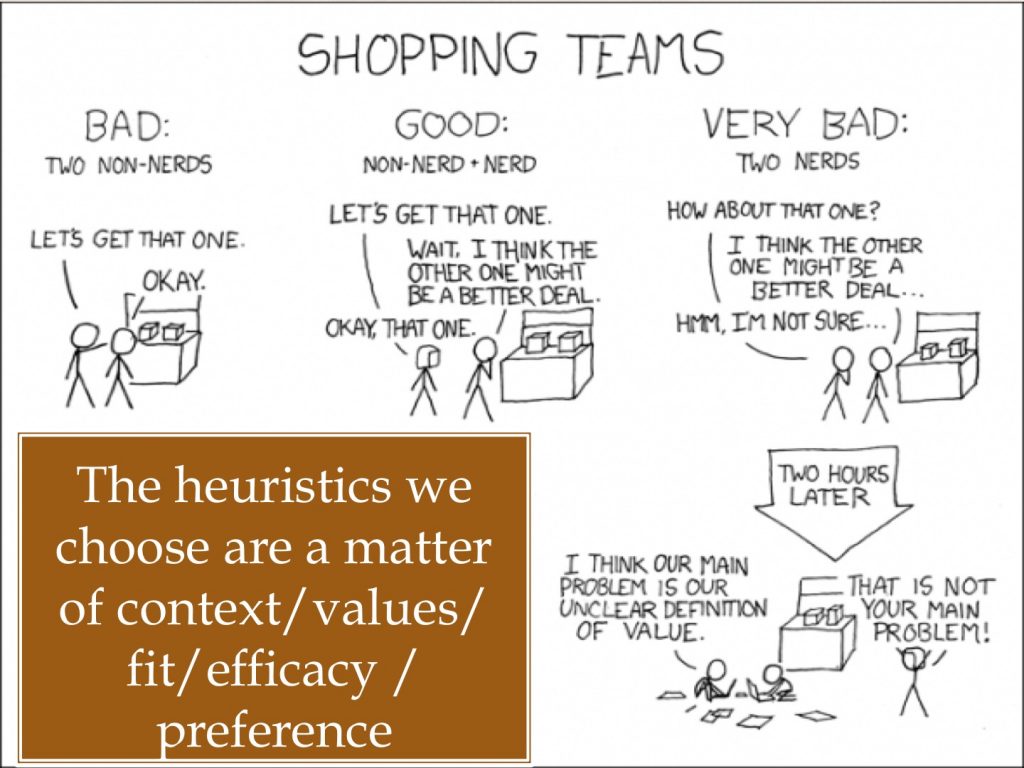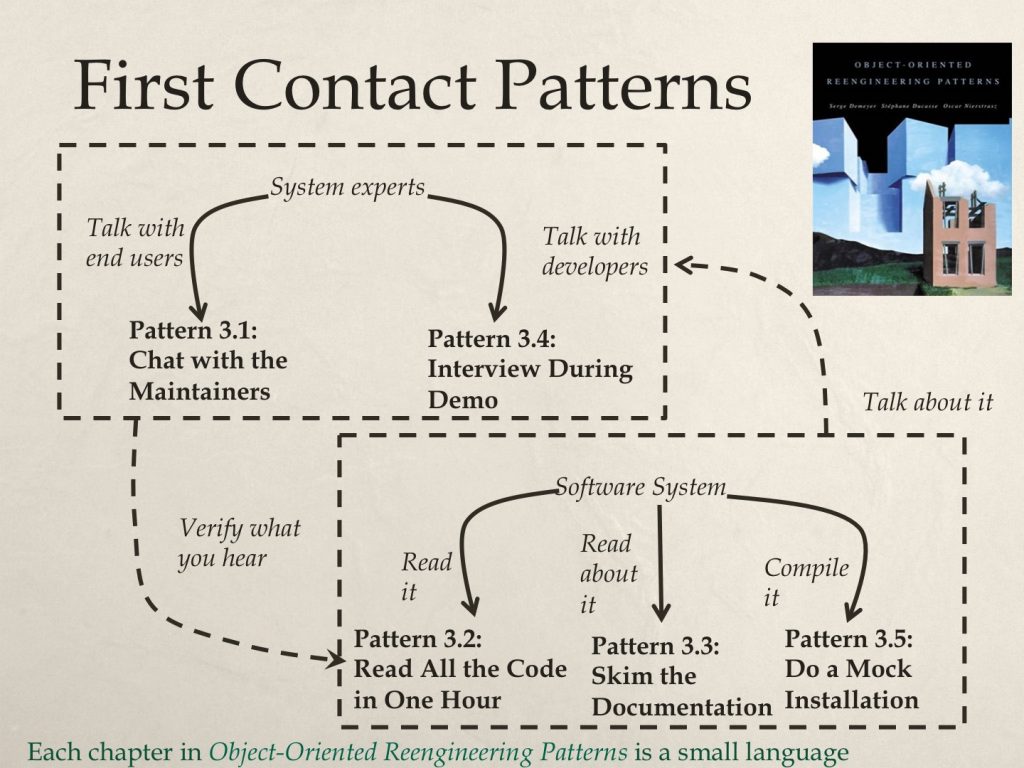Growing Your Personal Design Heuristics Toolkit
Billy Vaughn Koen’s Discussion of The Method has had a profound influence on my thoughts about design. This book has inspired me to explore the role that software patterns play alongside other design heuristics and led me to muse about design uncertainty. I’ve been inspired to experiment with simple ways to capture design heuristics and I've spent time heuristics hunting with other designers.
In this blog post I’ll introduce you to Billy Vaughn Kohn’s ideas about problem solving and heuristics. Billy defines heuristic as
“anything that provides a plausible aid or direction in the solution of a problem but is in the final analysis unjustified, incapable of justification, and potentially fallible.”
There are no guarantees. Heuristics can fail. The tenacity that defines an engineer is when she steps back, regroups, and finds a different heuristic to try next. Another important thing to consider is that there are always competing heuristics to choose from. There simply isn’t a single right way to solve any complex design problem. Based on our assessment of the situation, our judgment, and the fit of the heuristics we know to the problem at hand, we decide what to do next. And when designers disagree, it may be because they are focusing on different aspects of the problem, or that they have a different collection of cherished heuristics in their toolkit (whether or not they can articulate them).

Billy describes three different type of heuristics:
-
Heuristics we use to solve a specific problem;
-
Heuristics that guide our use of other heuristics (meta-heuristics, if you will); and
-
Heuristics that determine our attitude and behavior towards design or the world and the way we work.
Let’s take a closer look at each type.
Heuristics we apply to solve a problem. For example, in his book, Billy gives several examples of general engineering heuristics: Heuristic: Always be prepared to give an answer (and when you need to give an answer, use the best approach you know for figuring out that answer based on the time constraints and resources you have at hand). As an example, imagine the approach you might take for determining the number of Ping-Pong balls that fill up a room if you had to give an answer in 2 seconds. What if you had 2 minutes, an hour, or a week to come up with an answer? Would your approaches differ?
Heuristic: Use feedback to stabilize your design. Billy Vaughn Koen is a Professor Emeritus of Nuclear Physics as well as a philosopher of engineering. He taught people who designed nuclear reactors. I’m glad he taught them about the importance of feedback loops to verify design assumptions. And that is one reason why frequent delivery of software, retrospectives, and reviews are valued activities in agile development.
And oh yes, one last heuristic: Always give yourself a chance to retreat. Backing out of a half-baked or unworkable design is important if you don’t want to paint yourself into a corner.
As software designers we have many heuristics in our toolkit. If we know about design patterns, we use them. If we’ve built high-performance systems, we may have a wealth of heuristics for tuning cache performance. If we are familiar with Domain Driven Design concepts, our preferred way to structure a complex system is by identifying bounded contexts. For those unfamiliar with Domain Driven Design, a bounded context might be considered to be roughly equivalent to a subsystem or subdomain. The distinguishing characteristic of a bounded context is that within it there is a consistent, single, unambiguous meaning for business concepts and events. And we may visualize event flows and relationships between bounded contexts by drawing a context map.
Heuristics that guide our use of other heuristics. These heuristics tell us what to try next. The best examples I know of these heuristics are in Object-Oriented Reengineering Patterns. Each chapter in this book is a small pattern language, describing a rough sequence of actions for solving a particular system-reengineering goal. For example, chapter 3 is a pattern language for making “first contact” with a legacy system. Based on what you have just learned, the language spells out options for what to explore next.

Heuristics that determine our attitude and behavior. Agile software designers value frequent feedback. That’s the premise behind frequently deploying working software in order to have its functionality exercised by actual customers. And one heuristic for reducing the risk of downtime when frequently deploying software is to use a blue/green deployment environment.
While we may have learned design patterns (or other published patterns, for that matter) by reading about them, most nitty-gritty design heuristics come from on-the-job experience. We learn a lot by living with the myriad design choices we make (and revisit) as our system's functionality grows. We learn even more as we support a system over its lifetime. Our heuristics are shaped not only by the kinds of software systems we have designed, built, and maintained but also by the design culture at our places of work. How do we improve as designers? Through designing and building software. By reflecting on that experience. And by polishing and refining our heuristics and sharing our cherished heuristics with each other.